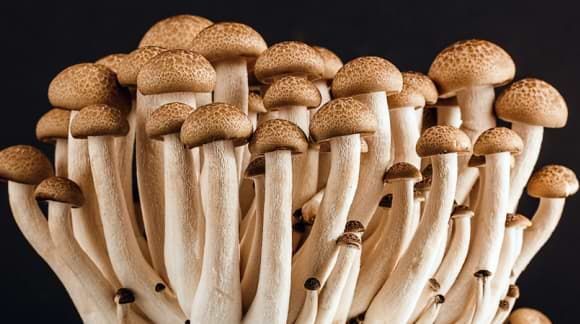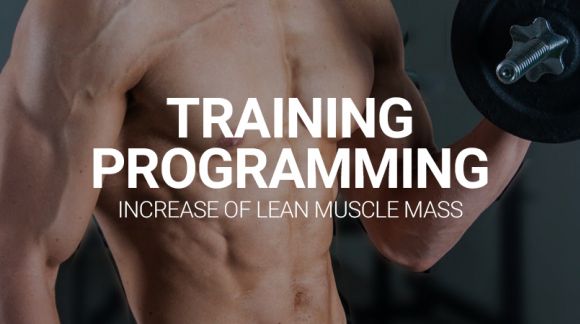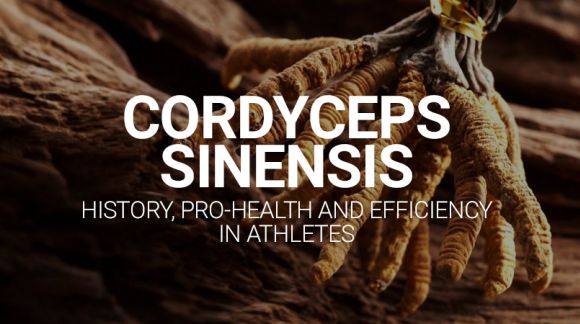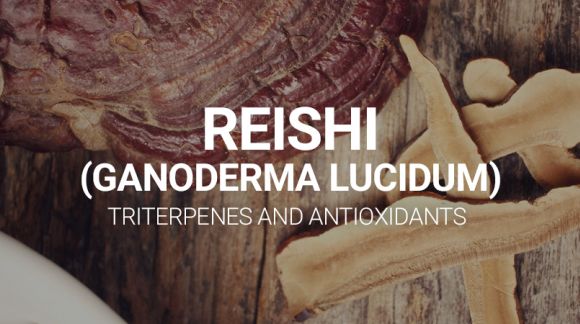Mitochondrium - the energetic engine of a cell
Organisms living on Earth are very complex units. Starting with the structure, you can pay attention to the different functions of individual organs and cells or the ability to carry out various types of processes. The simplest of organisms, i.e. prokaryotes * (mainly bacteria), despite the relatively simple single-cell structure, are so complicated that they have been devoted to several hundred years of research, and we still do not know everything. The matter is even more complicated when it comes to more complex multicellular organisms such as humans.
Circulation knowledge is very limited and simplified - the body is not only composed of organs, bones, muscles and the nervous system in as simple a form as it may seem. Each inner and outer part of our body is made up of smaller elements, and these are broken down into subsequent ones. It can be compared to a car: it is obvious that we can see the body, we know that the engine is inside and that it performs the most important function. However, the engine itself also consists of individual parts that enable it to function.
The smallest structural and functional unit capable of carrying out the life processes * of living organisms is the cell. It is the basic unit of the organism, the whole body is made of cells (for example, the cells that build the liver are hepatocytes, and the intestinal cells are enterocytes). One of the constituent parts of human cells is the mitochondria. It is a small organelle * measuring 2-8 micrometers (1 micrometer = one thousandth of a millimeter). Despite its small size, it performs important functions.
Basic information
The current widespread view is that mitochondria come from other living organisms that have managed to enter the cell and then have been incorporated into primary eukaryotic organisms * (humans are also included in this group). Endosymbiosis is a type of symbiosis (coexistence of two organisms) in which one organism lives inside the other, while the "Theory of Endosymbiosis" assumes that the processes of mitochondrial incorporation into cells took place about 1.7-2 billion years ago. Of course, many evolutionary processes have taken place since then. Currently, it is assumed that the average eukaryotic cell contains from several hundred to hundreds of thousands of mitochondria, although there are also some that have one. The reproduction of mitochondria occurs by the growth and division of the existing ones.

Energy production and other functions
Energy is necessary for any processes to take place in the human body, as well as in other organisms. This applies to noticeable activities such as movement (muscle contractions), but also to processes that are invisible and are going on all the time. Energy is generated as a result of various complicated processes (e.g. glycolysis or the Krebs cycle), but for all of them the final product of changes is ATP (adenosine triphosphate) - it is an energy carrier molecule. As the name suggests, ATP consists of adenosine and a triphosphate group, and the bonds between phosphate residues are highly energetic - when these bonds are broken, energy is released. The mitochondrion plays a very important role in the entire process of creating energy in aerobic processes. It is there that the enzyme needed for the production of energy is located - ATP synthase, thanks to which it is possible to produce ATP, which enables the biochemical reactions (on which the entire functioning of the body is based).
Mitochondria perform a number of functions in addition to producing energy. They store calcium ions, participate in apoptosis (programmed cell death), and enable the synthesis of hormones and heme (a component of hemoglobin).
Damage, supporting action
Mitochondria and entire cells, although regulated by the body, can be damaged anyway. There can be many causes, from genetic mutations to free radical damage. It can cause serious genetic diseases, such as epilepsy, MELAS syndrome, anemia. Free radicals or various substances are capable of destroying entire cells, including mitochondria. However, our organelles can be supported and improved in several ways.
There is a phenomenon in science called hormesis (You will learn more about hormesis in this article). It is based on the observation that a given substance or interaction can be both harmful and beneficial to the body. A Swiss physician in the 16th century, Paracelsus, uttered the popular words: "dose makes poison." With regard to mitochondria, just controlled exposure to certain potentially negative factors turns out to be a good solution.
Cold exposure and physical activity - in one study on mice, the test organisms were divided into four groups: thermoneutrality without exercise, exercise at neutral temperature, immersion in cold water, exercise at low temperature. The exercise the mice performed was swimming. After 8 weeks found that "Exercise and exposure to cold promoted increased expression of genes associated with mitochondrial biogenesis in soleus muscle." This means that it can promote the division and therefore the reproduction of the mitochondria.

Cryotherapy and cold water immersion - other scientists approached the topic of cold from a different angle. They tested the effects of cold water immersion and whole body cryotherapy. They examined men who performed physical exercise until adequate oxygen consumption and an increase in body temperature, and then subjected the subjects to the above-mentioned procedures. Their conclusion was that cooling to recover from exercise and injury is warranted. It does not necessarily have to do with mitochondria, because the improvement of regeneration may be due to the reduction of blood flow and tissue temperature. However, this study is worth considering when looking at the benefits of exposure to cold in terms of both the mitochondria and other organs and functions.
Heat stress - When it comes to hormones, of course you can't just focus on one factor that can affect your body. If exposure to cold is good for your body, you may suspect that heat is as well. This was checked in 2018 in human studies. The muscle temperature of the test subjects was increased by 3.9 ° C in 30 minutes. After a 2-hour session, a number of biochemical changes in the body were observed. Upon completion of the study, it was concluded that "The results of this study have clinical implications for a number of conditions characterized by reduced mitochondrial function in skeletal muscle." It can therefore be concluded that subjecting the muscles to short-term heat stress (e.g. diathermy treatment) has a positive effect on the functions of the mitochondria.
Supplementation - we are dealing here with the term "mitochondrial substances", i.e. compounds that support the optimal functioning of these organelles. These include Coenzyme Q10, Omega-3, B vitamins, vitamins D and C, Cordyceps sinensis, Astragalus (membranous astragalus) and antioxidants, e.g. in green tea extract.
HIIT training - in one of the studies, the impact of a 12-week training cycle on the body was tested, including the effects of mitochondria. The groups performed HIIT (High Intensity Interval Training) and RT (resistance) training, and a mixture of both types. There was an increase in insulin sensitivity and an increase in lean body mass in all groups. Combined training and HIIT additionally increased aerobic capacity and improved the parameters of the mitochondrial respiration of the muscles. By providing more protein substances for the mitochondria, interval training increased the capacity of the mitochondria by 49% in the young group and by 69% in the older group.

Dig. Enhanced Protein Translation Underlies Improved Metabolic and Physical Adaptations to Different Exercise Training Modes in Young and Old Humans, 2017
***
Eukaryotes - organisms that have cells with a cell nucleus, they include, among others, humans
Prokaryotes - microorganisms, most often single-celled, that do not have a cell nucleus
Life processes - these are activities that are characteristic of living organisms. These include: movement, breathing, response to stimuli, growth, excretion, reproduction and nutrition.
Organella - these are structures smaller than the cells that make up them. The cell membrane separates the inside from the outside environment, and the organelles inside perform various functions.
Bibliography:
Wojciech Sawicki: Histologia. Warszawa: Wydawnictwo Lekarskie PZWL, 2008. ISBN 978-83-200-3710-4.
Bruce Alberts: Podstawy biologii komórki, Część 2. Warszawa: Wydawnictwo Naukowe PWN, 2007, s. 498. ISBN 978-83-01-14469-2.
Lynn Sagan. On the origin of mitosing cells. „Journal of Theoretical Biology”. 14 (3), s. 225-274, 1967-03. DOI: 10.1016/0022-5193(67)90079-3
Da-Fei Feng, Glen Cho, Russell F. Doolittle. Determining divergence times with a protein clock: Update and reevaluation. „PNAS”. 94 (24), 1997-11-25. DOI: 10.1073/pnas.94.24.13028
Victor V. Emelyanov. Rickettsiaceae, Rickettsia-Like Endosymbionts, and the Origin of Mitochondria. „Bioscience Reports”. 21, s. 1-17, 2001. DOI: 10.1023/A:1010409415723
Organizacja komórki. W: Eldra P. Solomon, Linda R. Berg, Diana W. Martin: Biologia. Warszawa: MULTICO Oficyna Wydawnicza, 2007. ISBN 978-83-7073-412-1. OCLC 177294444.
Robert T. Morrison, Robert N. Boyd: Chemia organiczna. T. 2. Warszawa: PWN, 1985, s. 398–399. ISBN 83-01-04166-8.
Molecular Cell Biology. Wyd. 5.. Nowy Jork: WH Freeman, 2004. ISBN 978-0-7167-4366-8.
Kunz WS. Curr Opin Neurol. 2002 Apr;15(2):179-84. The role of mitochondria in epileptogenesis.
Nana Chung,1 Jonghoon Park,2 and Kiwon Lim1,3,The effects of exercise and cold exposure on mitochondrial biogenesis in skeletal muscle and white adipose tissue J Exerc Nutrition Biochem. 2017
Mitochondrial myopathies. S. DiMauro, Curr Opin Rheumatol. 2006 Nov;18(6):636-41
Mawhinney C1, Low DA, Jones H, Green DJ, Costello JT, Gregson W. Cold Water Mediates Greater Reductions in Limb Blood Flow than Whole Body Cryotherapy. Med Sci Sports Exerc. 2017 Jun;49(6):1252-1260. doi: 10.1249/MSS.0000000000001223.
Hafen PS1, Preece CN1, Sorensen JR1, Hancock CR2, Hyldahl RD1. Repeated exposure to heat stress induces mitochondrial adaptation in human skeletal muscle. J Appl Physiol (1985). 2018 Nov 1;125(5):1447-1455. doi: 10.1152/japplphysiol.00383.2018. Epub 2018 Jul 19.
Robinson MM1, Dasari S2, Konopka AR1, Johnson ML1, Manjunatha S1, Esponda RR1, Carter RE2, Lanza IR1, Nair KS3. Enhanced Protein Translation Underlies Improved Metabolic and Physical Adaptations to Different Exercise Training Modes in Young and Old Humans. Send to Cell Metab. 2017 Mar 7;25(3):581-592. doi: 10.1016/j.cmet.2017.02.009.








